 F O R T M A C L E O D
F O R T M A C L E O D
Fort Macleod was established as a North-West Mounted Police fort, led by James F. Macleod, in October 1874. Originally located on an island in the Oldman River, the fort experienced constant flooding and it was decided to move the fort south-east towards the present townsite. The fort acted as a catalyst for settlers and soon the area was home to several businesses and residents. The Post Office opened on October 1, 1883.
In 1892, Fort Macleod was incorporated as a town, however, its name would be changed to Macleod until 1912. The 1890’s saw the start of a construction boom in the new town. The arrival of the railway and the decision to make Macleod the railway division point led settlers to flock to the area. New railway structures including a roundhouse, turntable and maintenance facilities were constructed; new subdivisions were planned, real estate prices shot up, and a bustling main street sat at the heart of it all.
This boom happened in a very back handed way. Two rival towns, Haneyville and West Macleod were both established by the Canadian Pacific Railway to snub Macleod in the late 1890’s. Despite announcing that Macleod would be the divisional point, the C.P.R. built past Macleod and joined the rail lines at a new centre known as West Macleod, just a few kilometers north-west across the river. The citizens of Macleod did not take kindly to this stunt, and by 1906 the town of West Macleod was no more.
That same year, a fire destroyed a large portion of Macleod’s downtown, and a new bylaw was passed stating all new buildings were to be constructed of brick or sandstone. The downtown was rebuilt quickly due to the economic benefit of the railway, and the surge in labourers it brought with it.
In 1907, the C.P.R. would snub Macleod once again. The new crowsnest line was announced and Macleod was to be the construction centre…or was it. The C.P.R. decided to build a station a mere 2.5 kilometers outside town limits and established the town of Haneyville, and while Macleod did benefit, it was not an ideal situation. The Final nail in the coffin was in 1911, when the C.P.R. announced they were moving the divisional point to Lethbridge, Alberta. Over 200 people lost their jobs, and many rail facilities were demolished or downsized to suit the loss in demand.
This was the beginning of decades of stagnation and decline for Fort Macleod. The town borrowed extensively to fund the services expected from the railway boom, and in 1924 was forced to declare bankruptcy due to huge debt loads. This meant the town could not borrow money to fund expansion or improvements for 50 years, and alongside the Great Depression and World War 2, the town was put in a dire situation. In 1982, Fort Macleod’s main street was designated as a historical area and was protected from demolition or extensive alteration.
Funds were poured into renovating and restoring the aging buildings, and in 1988 the Alberta Main Street Program restored several buildings to their original glory. Fort Macleod began growing again, and shortly afterwards became an attractive site for filmmakers. Interstellar, Brokeback Mountain and Ghostbusters: Afterlife are just a few of the many movies filmed either in, or around Fort Macleod.
Today the town is in a state of limbo. The latest census (2016) shows a 4% decline in population to a current 2,967 people, and while that may seem negative the town has wavered between a population of 2,800 and 3,200 for decades. Economically there has been much progress, especially in tourism due to filmmaking; a re-emergence of historical interest, and the nearby UNESCO world heritage site at the Head-smashed-in buffalo jump.
historical information courtesy of Ryan Mckirdy
| |
|
| |
|
| |
|
| |
|
| |
|
| |
|
| |
|

A letter mailed in Fort Macleod on May 4, 1885, when the town was part of the Territory of Alberta.
click any image to enlarge
-------- North West Mounted Police Post --------




---------- Town Views ----------








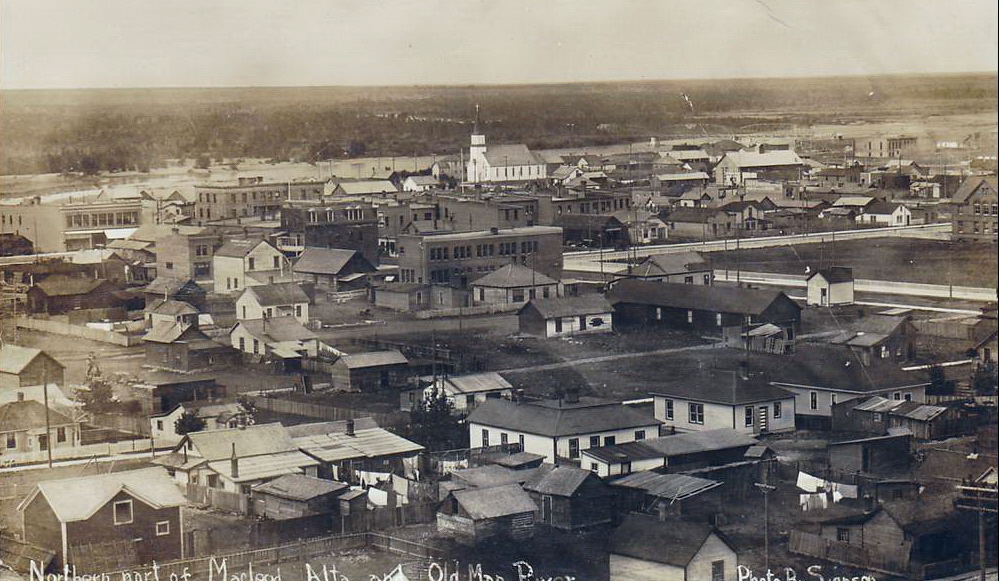


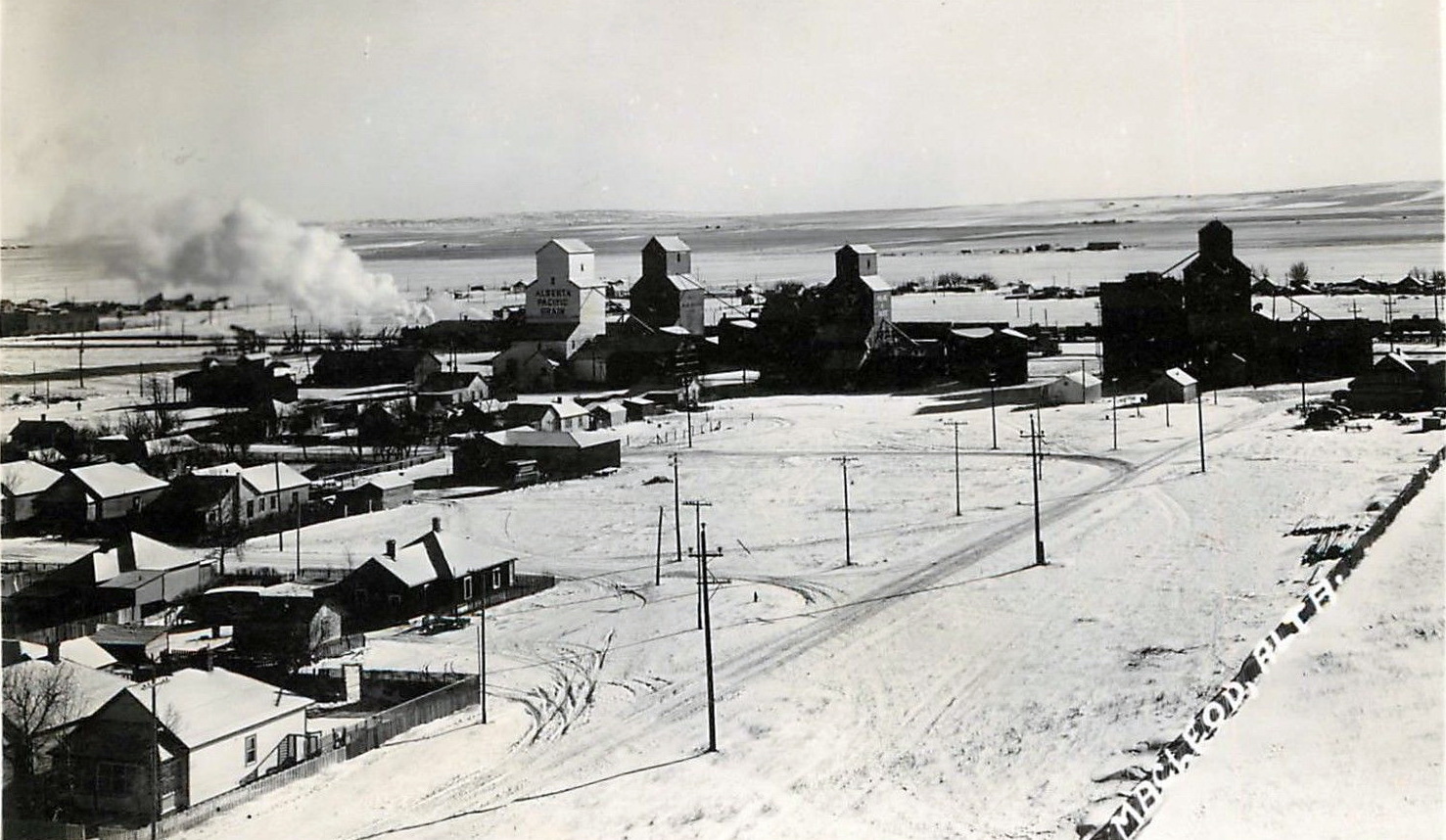

---------- Street Views ----------









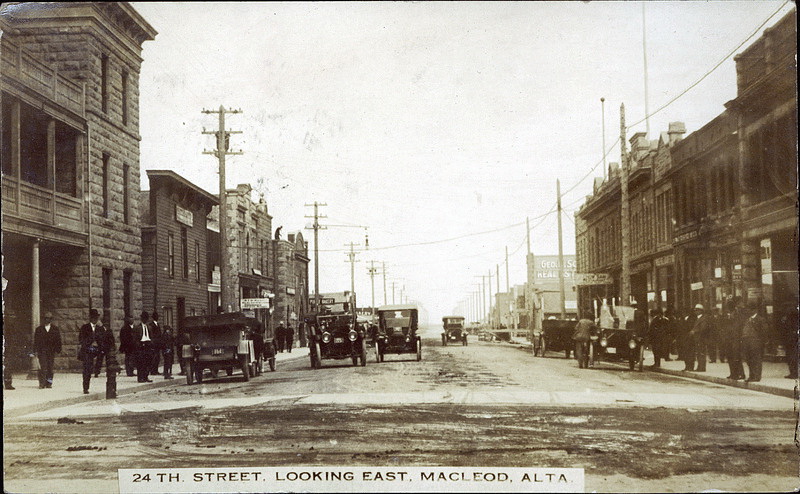
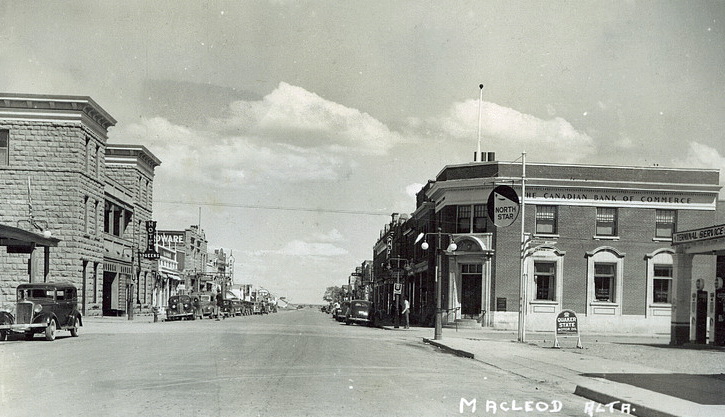















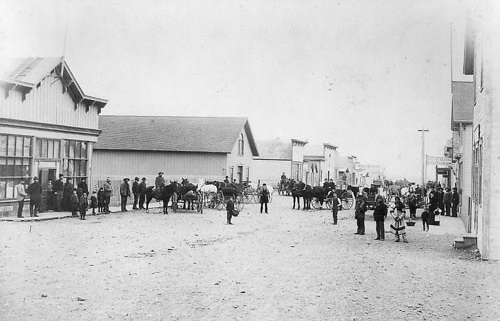


















---------- Railroad Views ----------









---------- Schools ----------



---------- Churches ----------


---------- Commercial Buildings ----------



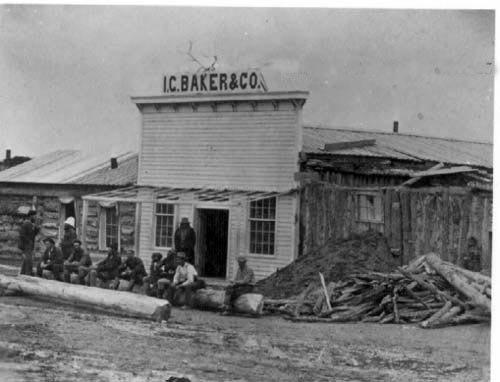
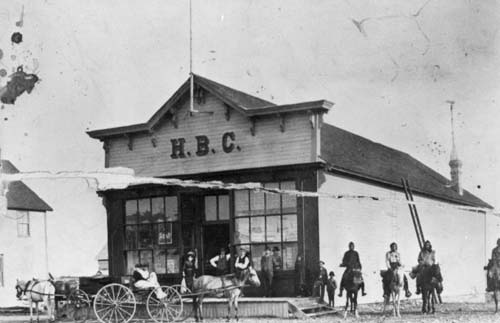

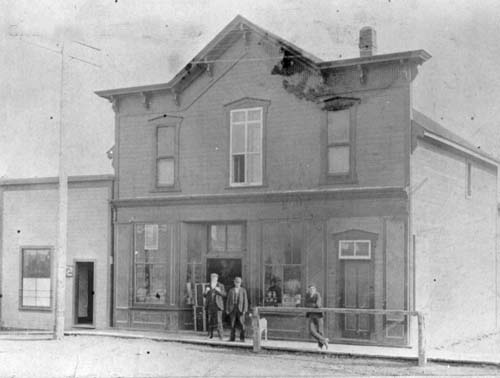

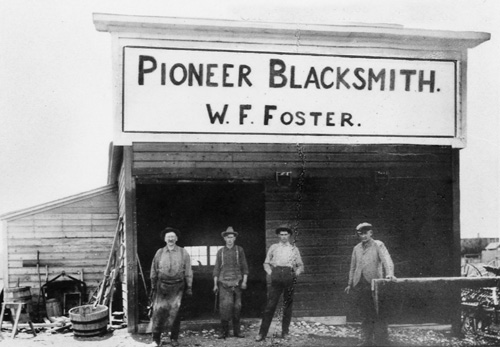




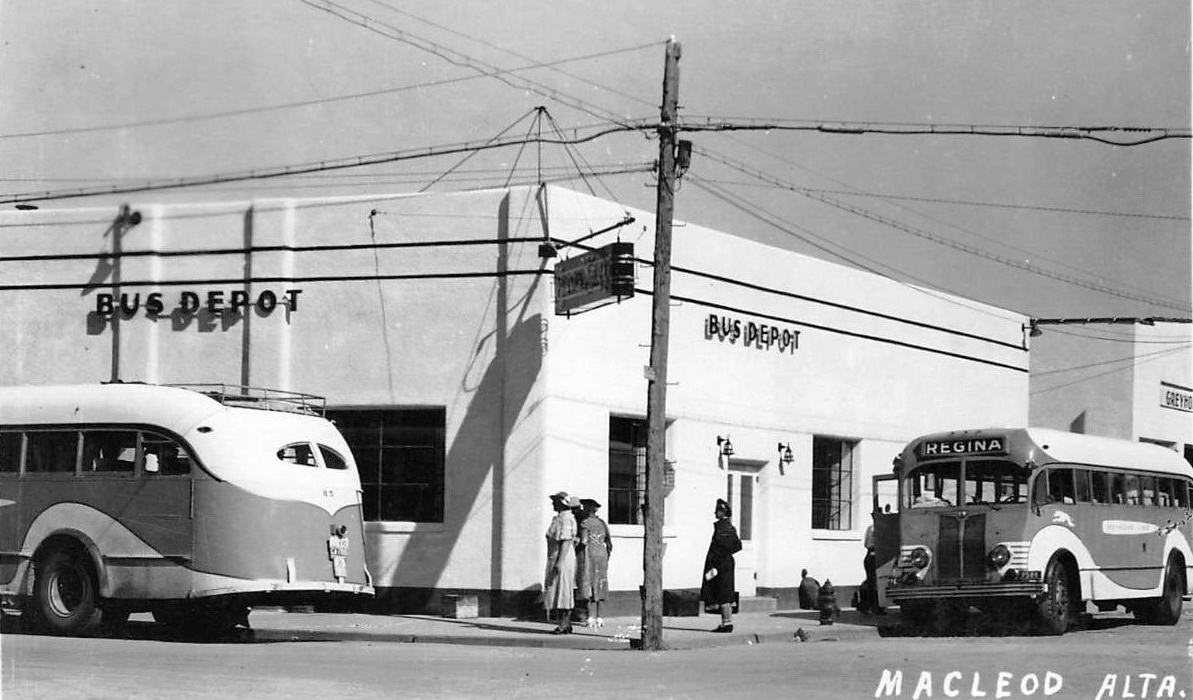

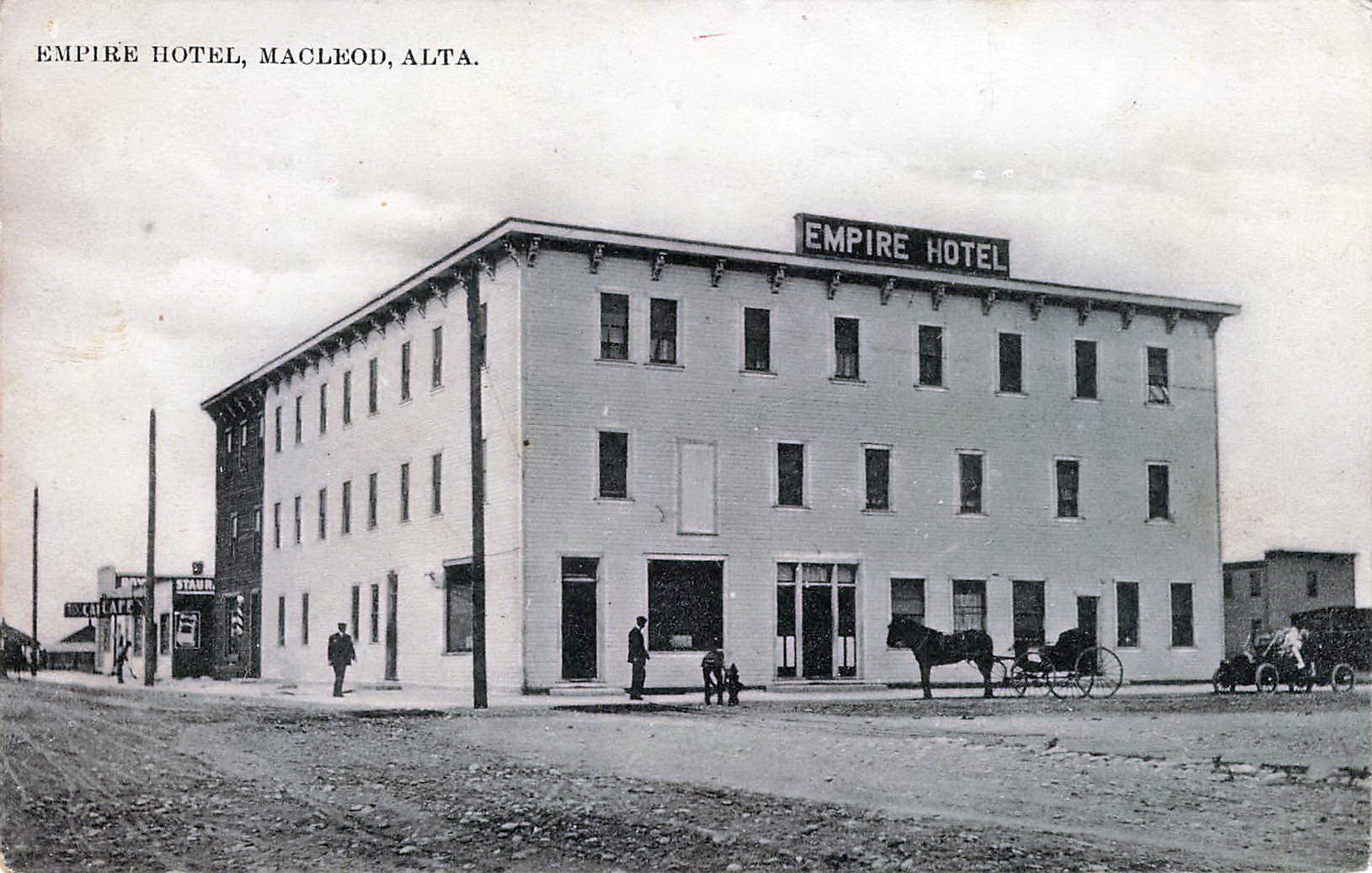
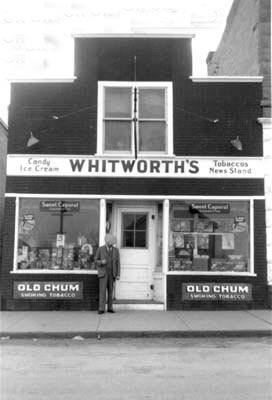


---------- Public Buildings ----------



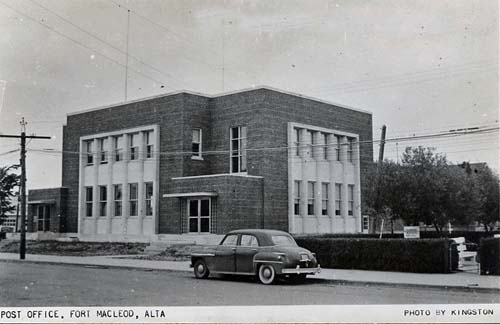



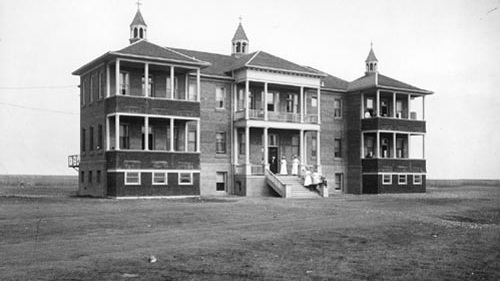









---------- Residential ----------


---------- Fort Macleod Today ----------



